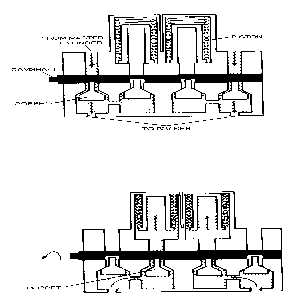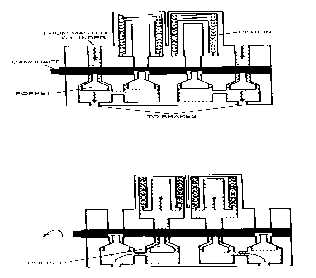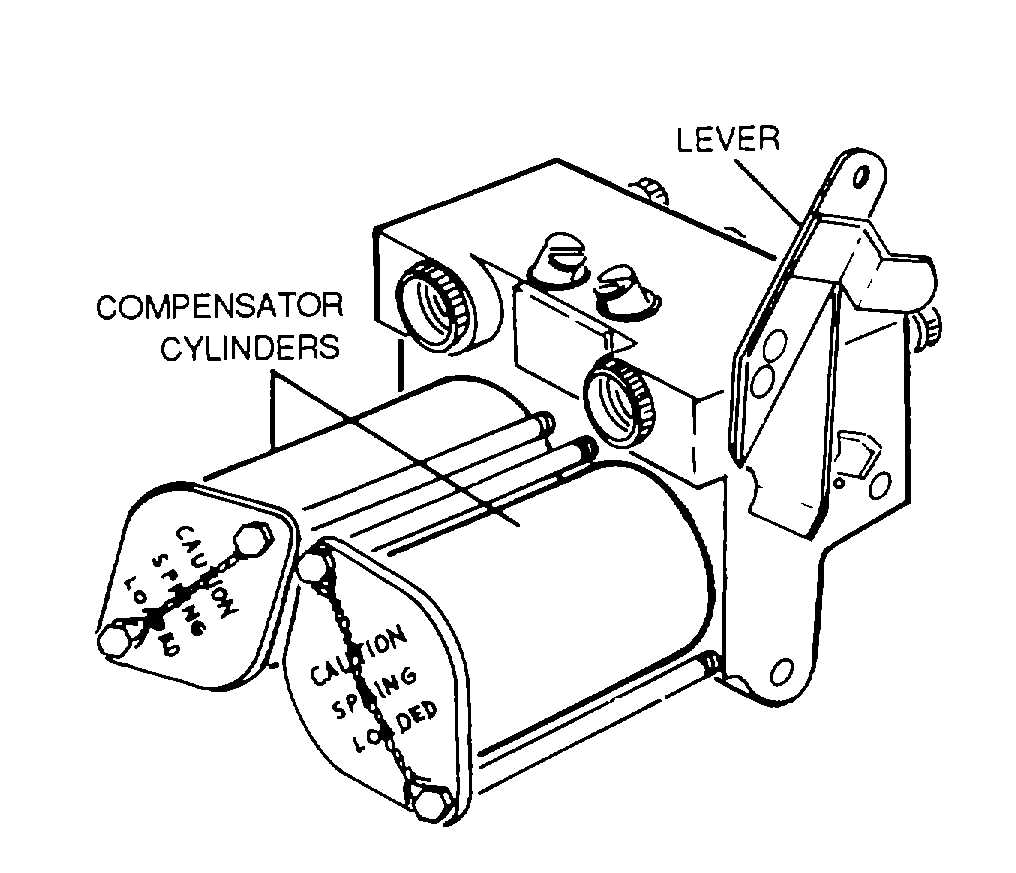TM 1-1500-204-23-2
Figure 4-156. Dual Parking Brake Valve
Figure 4-157. Dual Parking Brake Valve (Off)
(1)
Brake application. To apply the rotor brake, the master cylinder handle is slowly pushed
downward and forward. This results in a movement of the master cylinder piston that forces fluid out of the master
cylinder and Into the rotor brake cylinders. Movement of the fluid causes the pistons and brake linings of each pair of
brake cylinders to move toward each other This produces a clamping action on the rotor brake disc which stops its
rotation. The master cylinder handle is automatically locked in the brake on position for parking the aircraft by means of
a spring-loaded latch.
(2)
Brake release. To release the brake, the spring-loaded latch has to be pulled outward to
disengage it from the handle. A spring-loaded detent helps to hold the handle in the released position.
d.
Maintenance of Brake Systems. Proper functioning of the aircraft brake system is of utmost importance.
Failure of any component within the system could result in destruction of equipment and loss of life.
(1)
Inspection. Inspections must be conducted at frequent intervals and maintenance work which
might be indicated must be performed promptly and carefully. The system should be under operating pressure when it is
being checked for leaks, but loose fittings must be tightened with the pressure off. All flexible hoses should be carefully
checked for swelling, cracking, and soft spots and should be replaced. If evidence of deterioration is noted. The proper
fluid level must be
Figure 4-158. Dual Parking Brake Valve (On)
4-151





